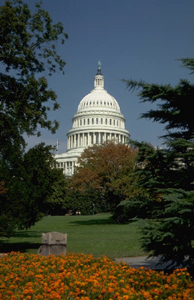
 Last week, what is described as "a broad coalition" representing patent holders and inventors sent a letter to Representatives Bob Goodlatte (VA, 6th) and John Conyers (MI, 13th), Chairman and Ranking Member, respectively, of the House Judiciary Committee; and Senators Chuck Grassley (R-IA) and Patrick Leahy (D-VT), Chairman and Ranking Member, respectively, of the Senate Judiciary Committee, regarding the potential for "patent reform" legislation in this Congress.
Last week, what is described as "a broad coalition" representing patent holders and inventors sent a letter to Representatives Bob Goodlatte (VA, 6th) and John Conyers (MI, 13th), Chairman and Ranking Member, respectively, of the House Judiciary Committee; and Senators Chuck Grassley (R-IA) and Patrick Leahy (D-VT), Chairman and Ranking Member, respectively, of the Senate Judiciary Committee, regarding the potential for "patent reform" legislation in this Congress.
The letter begins with the groups bona fides, that the signatories "represent the majority of the nation's patent holders and inventors," and a reminder that they represent "thousands of organizations that employ millions of workers in the United States." The letter then gets right to the point: first, that "the future of the U.S. economy, including domestic job growth and our competitive advantage in the global economy" requires a strong patent system that not only provides incentives for inventors to inventor but "protects their inventions from unfair copying by others."
De reguerre, the letter expresses appreciation for the hard work of the committee and a desire to work together. But the letter also promises that the coalition "will continue to strongly oppose legislation that would weaken the overall patent system and thereby diminish innovation and job creation in the U.S." The letter also points out that the legal landscape has changed since Rep. Goodlatte introduced his whimsically named "Innovation Act" (H.R. 3309) in the last Congress. These changes include the five patent cases decided by the Supreme Court in 2014 (Alice, Nautilis, Limelight, Octane Fitness and Highmark), which "are already making it easier to defeat patents, including the kind of patents that often are asserted in abusive litigation, and disincentivizing the bringing of meritless claims." Also noted are the IPR and CBM provisions of the Leahy-Smith America Invents Act, which "increase patent quality and reduce abusive practices"; the effects of these provisions (which "allow anyone to challenge patents in a fast, relatively inexpensive proceeding before the [] PTAB") "are only now beginning to take hold." The availability of these provisions have affected litigation, wherein district court judges "are now granting 80% of all motions to stay patent litigation" for patents involved in such proceedings. Evidence for the effectiveness of IPR and CBM proceedings before the PTAB as illustrated by the statistics that "more than 2,300 patents" have been challenged in the two years since the PTO began implementation, and "fully 75% of the involved claims have been found unpatentable and only about 20% of all patents have survived the proceedings with no changes."
The letter also cites the changes adopted by the Judicial Conference of the United States raising the pleadings standards for patent cases and limiting discovery to what is "proportional to the needs of the case," which the letter asserts will "reduc[e] the ability of patent plaintiffs to use unnecessary discovery requests to drive up [litigation] costs for defendants in an effort to force unwarranted settlements." These changes are expressly directed to provisions of H.R. 3309 intended to have just those effects.
Finally, the letter notes the efforts of the Federal Trade Commission and states attorneys general to "combat abusive patent demand letters and protect small businesses and consumers from unscrupulous practices" and the settlements imposed on MPHJ Technology investments by the FTC and N.Y. State attorney general.
The letter concludes that "[t]aken together, these judicial and administrative developments, and the plunge in the patent litigation rate, have fundamentally changed the landscape under which patent legislation should be considered." These developments should be considered "[a]s Congress considers potential changes to the patent system that threaten the constitutionally-guaranteed property rights of innovators." While again pledging their support "to make improvements to patent law that protect small business, consumers, and the general public from abusive patent litigation," the letter promises that its signatories will "zealously guard[] the United States' competitive edge as the dominant global leader in innovation."
This letter is a refreshing, robust and impassioned defense of the U.S. patent system, which has become the whipping boy for every politician, editor, and putative technology pundit (as well as not a few misguided Supreme Court Justices) over the past ten years. It's about time.
* These include companies such as Amgen, Dolby Laboratories, Qualcomm, Tessera Technolgies, Alexion Pharmaceuticals, AstraZeneca Pharmaceuticals, DuPont, Biogen Idec, Genzyme, Sunovion Pharmaceuticals, Monsanto, Bayer Crop Science, Celgene, DSM North America, and Merck & Co.; industry groups including BIO, Arizona BioIndustry Association, BioFlorida, San Diego Inventors Forum, Colorado Bioscience Association, CURE – Connecticut United for Research Excellence, BayBio, SoCalBio, IEEE-USA, Medical Device Manufacturers Association, National Small Business Association, National Venture Capital Association, PhRMA, Small Business Technology Council, Indiana Manufacturers Association, Massachusetts Biotechnology Council, and the North Carolina Biosciences Organization; universities and university groups, including Association of American Universities, Association of Public Land Grant Universities, Cedar Sinai Medical Center, Colorado School of Mines, and WARF.